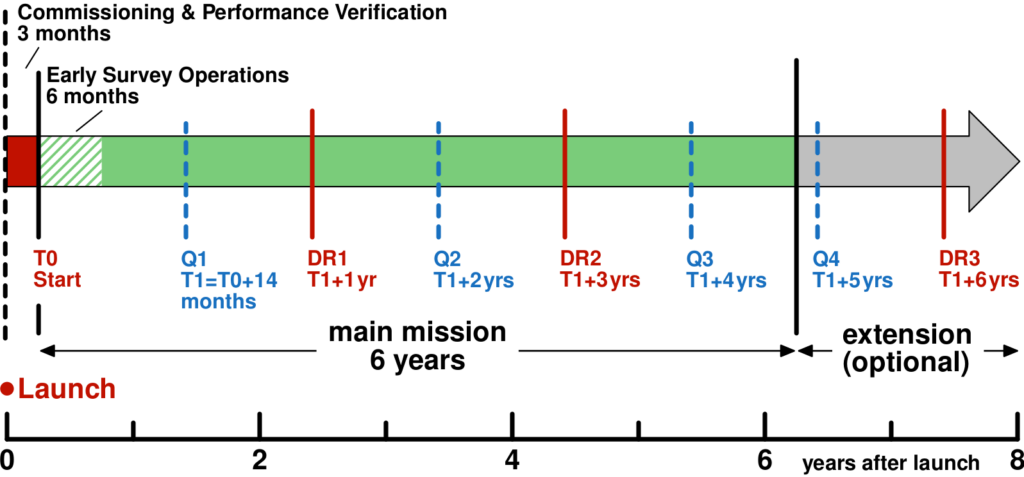Timeline of Euclid development milestones
2005: Publication of ESA Cosmic Vision Programme for the 2015-2025 timeframe
2007: Call for Cosmic Vision proposals; selection of the of DUNE and SPACE proposals
2008: Euclid mission presented by the Concept Advisory Team to the ESA science advisory structure.
Concurrent Design of the Euclid Mission in preparation of the selection of two industrial contracts for Assessment Studies.
2009: Presentation of the Euclid Mission assessment study to the various committees. Publication of the Yellow Book.
2010: Selection of Euclid for Definition Phase Study. Two industrial contracts were issued for the Phase A/B1. Announcement of Opportunity for a Euclid Mission Consortium.
2011: Publication of the Red Book. Selection of Euclid to become the second M-Class mission (M2) in the Cosmic Vision programme. Solicitation of the Euclid Consortium.
2012: Adoption of the Euclid Mission by the SPC. Formal start of the project team, kicking off Phase B1. Selection of Airbus Defense and Space (Toulouse) leading a consortium for the procurement of the payload module (PLM).
2013: Selection of Thales Alenia Space Italy to become the prime contractor leading an industrial consortium procuring the space segment.
2015: Mission Preliminary Design Review (M-PDR)
2018: Mission Critical Design Review (M-CDR)
2022: System Qualification Review including the Mission Key Point
2023: Euclid launch and Mission Commissioning Results Review. Start of nominal mission
2025: Euclid Data Processing Readiness Review, Q1 Release
2026: Data Release 1 (DR1), public release of first year of Euclid Survey data.
Timeline of the Euclid Survey
The overall active mission duration for Euclid is planned to be at least 6.5 years, with main survey operations lasting 6 years after an initial commissioning phase of 3 months following launch. If Euclid continues to be operational after this time, a mission extension could follow with additional surveys. Data will be made public to the world: three main data releases (DR1, DR2, DR3) are phased with the survey progress, with the final DR3 a good year after the end of the main survey.
Preceding each major DR are so-called “quality releases” (Q1, Q2, Q3, Q4) of selected areas and data-products, to demonstrate the data to be expected, and to allow scientists to sharpen their data analysis tools.
Euclid has been launched on 1 July 2023 and the Q1 data release has taken place on 19 March 2025.

Updated 2025-03-27, KJ
